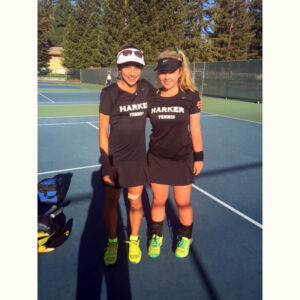Students in Raji Swaminathan’s Gr. 7 science class used computer software to perform an experiment on static and kinetic friction on Sept. 21. “Students used a Vernier dual range force sensor and LoggerPro software to study and graph static and kinetic friction acting when a wooden block with a one-kilogram mass is pulled,” Swaminathan said. “They learn that a static friction force acting in the opposite direction increases to match their pulling force.” Static friction is what holds an object in place, such as a wooden block on a ramp, while kinetic friction occurs when two objects move against one another, such as a sled moving downhill.
“Furthermore, there is a maximum static friction force possible for two given surfaces in contact and they see that when they overcome that max static friction, the block starts moving,” Swaminathan said. “The graph that they plot helps them to see that the kinetic friction is smaller than the max static friction.” Their experiments also showed them that when the applied force on the block is equal to the opposing friction force, it moves at a constant velocity, and the block will accelerate if the applied force is greater than the opposing friction force.










